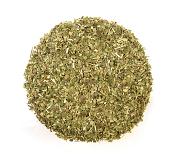Japanese tea
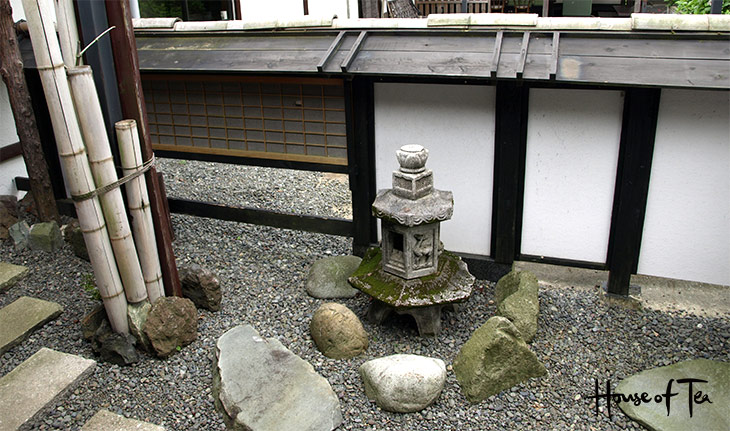
JAPANESE TEA – HISTORY, REGIONS AND TYPES
Japanese tea is almost always green tea from the tea bush Camellia sinensis, usually steamed rather than dry-pan-fired as in many Chinese teas. This gives a distinct, characteristic flavour profile with notes of umami, sweetness and sometimes a certain grassiness. The differences between, for example, Sencha, Kabuse, Gyokuro and Matcha depend on how the tea is grown (shading), harvested and processed.
THE HISTORY OF JAPANESE TEA
The first documented tea seeds are said to have come to Japan from China in the 9th century. The monk Saichō (Dengyō Daishi) travelled to China in the year 804 to study Buddhism and brought tea back with him. It is likely that tea bushes existed in Japan earlier, but without developed knowledge of how tea should be processed and drunk.
In the 12th century, the monk Eisai travelled to China to study Zen Buddhism. He brought back new tea seeds and knowledge about tea, and gave seeds to the monk Myōe Shōnin, who planted tea in Uji, near Kyoto. Uji would become one of Japan’s most important tea regions, especially for Matcha and Gyokuro.
Tea first spread among monks and the aristocracy, and later among samurai. Over time, tea became part of the culture in broader layers of society. During the 16th and 17th centuries the Japanese tea ceremony, chanoyu or chado – “the way of tea” – was refined, particularly by the tea master Sen no Rikyū. Much of today’s Japanese tea culture still rests on that foundation.
TEA AND BUDDHISM
Tea has long been closely connected with Buddhism. In both China and Japan, monks drank tea to stay awake and focused during long periods of study and meditation. A classic legend tells that the monk Bodhidharma, a founding figure in the Zen tradition, cut off his eyelids when he fell asleep during meditation – and that tea bushes grew where they fell. The legend is just a legend, but it shows how deeply tea is embedded in the Buddhist storytelling tradition.
Tea, discipline and aesthetics also meet in both Chinese gong fu brewing and the Japanese tea ceremony: a combination of technique, concentration and simplicity.
JAPANESE TEA REGIONS
Japanese tea is not grown at the same extreme altitudes as some Chinese or Indian teas, but climate, soil and tradition make the regions clearly distinct from each other.
SHIZUOKA
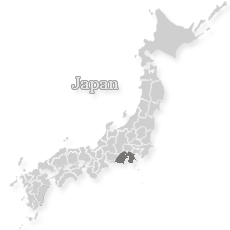
Shizuoka is Japan’s largest tea-producing prefecture. A large share of all Japanese tea comes from here, and the cultivation area covers tens of thousands of hectares. The majority of production is Sencha in various qualities, from simple everyday teas to more exclusive teas from specific valleys and mountain slopes.
Areas such as Honyama, Kawane, Shida and Tenryū are known for more aromatic and higher-quality teas, while Makinohara and some fields near Mount Fuji stand for more large-scale production. In the Shida area lies Okabe, known for its Gyokuro production.
KYOTO
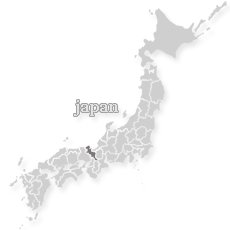
Kyoto is a historic cultural city with many temples and gardens. In the tea world, the region is particularly associated with Uji – one of Japan’s oldest and most written-about tea areas. Tea has been grown here for centuries, and the name Ujicha is used as a designation of origin for tea from the area and is associated with high quality.
Uji is especially famous for shaded teas such as Gyokuro and Tencha (the base for Matcha), but also for high-grade Sencha. The tradition of shading, long-term storage of certain teas and careful hand-processing has been developed here over a very long time.
KAGOSHIMA
Kagoshima, in southern Japan on the island of Kyushu, is the second largest tea-producing region after Shizuoka. Tea is grown here in a mild climate with volcanic soil and modern plantations. The region produces a wide variety of Japanese teas – often with a focus on modern cultivars and efficient cultivation.
Kagoshima is also known for Fukamushi Sencha, tea that is steamed longer than usual. This gives a sweeter, fuller cup and often a more intensely green, slightly cloudy liquor.
FUKUOKA (YAME)
Fukuoka is located in northern Kyushu. The Yame area is particularly famous for Gyokuro and high-grade Matcha. A large share of Japan’s Gyokuro is produced here, and Yame is often associated with rich, umami-heavy shaded teas with deep sweetness.
JAPANESE TEA TYPES AND SHADING
Japan mainly produces green teas that are steamed after harvest to stop oxidation. The differences between the various types depend on:
- when during the year the tea is harvested
- whether the tea bushes are shaded before harvest – and for how long
- how long the steaming lasts (short, normal or extended – fukamushi)
- which cultivar is used (Yabukita, Saemidori, Okumidori, Gokō, etc.)
Shading reduces the formation of certain catechins and increases the level of amino acids such as theanine, which gives softer bitterness, more umami and often sweeter taste. The degree of shading is a key factor in the difference between Sencha, Kabuse and Gyokuro.
SHINCHA – “NEW TEA”
Shincha is the very first tea from the spring harvest, often from the same fields that later produce Sencha. The leaves contain more moisture and are sold soon after harvest, without longer storage. This gives a very fresh, green and lively taste, but the tea is not intended for long-term storage. Not all tea from the first harvest is sold as Shincha – some is stabilised and sold later as Sencha.
SENCHA
Sencha is Japan’s most common green tea. In everyday use, the name essentially means “steamed tea”, even if it has other historical meanings. Quality varies greatly – from simple everyday sencha to small, hand-picked lots with complexity on the level of more exclusive teas.
Sencha is often made from the Yabukita cultivar, but other cultivars such as Okumidori and Saemidori are also used. The first harvest (ichibancha) in April–May usually gives the most aromatic, high-grade Sencha. Later harvests produce simpler, stronger teas.
The flavour profile can range from fresh, herbaceous and light to deeply sweet, umami-rich and powerful, depending on region, harvest and steaming degree.
FUKAMUSHI SENCHA
Fukamushi means “deeply steamed”. The leaves are steamed longer than for regular Sencha, which breaks down the leaf structure more. The result is often:
- smaller, more broken leaf pieces
- a liquor that becomes intensely green and sometimes slightly cloudy
- a fuller, sweeter and more “thick” cup
Fukamushi Sencha is often associated with regions such as Kagoshima and parts of Shizuoka.
KABUSECHA – PARTIALLY SHADED TEA
Kabusecha is a tea where the bushes are shaded for a time before harvest, but not as long or as heavily as for Gyokuro. It is often shaded for about 1–2 weeks with roughly half the normal light.
The result is a tea that sits flavour-wise between Sencha and Gyokuro: more umami and sweetness than regular Sencha, but fresher and less concentrated than Gyokuro. Kabusecha is a good way to experience shaded Japanese teas without going all the way to the most intense Gyokuro styles.
GYOKURO – HIGH-GRADE SHADED TEA
Gyokuro is considered one of Japan’s most exclusive teas. The tea bushes are heavily shaded for a longer period before harvest, often around three weeks, with 80–90 % reduced light. Shading increases the level of amino acids and reduces catechins, which gives:
- deep umami
- pronounced sweetness
- softer bitterness
- darker, deeply green leaves
Gyokuro is made from leaves of shaded plants that are processed into leaf tea. The same type of raw material can also become Tencha, which is then milled into Matcha – but the processing differs.
Gyokuro is especially associated with three regions: Uji (Kyoto), Yame (Fukuoka) and parts of Shizuoka. Common cultivars include Gokō, Uji Hikari, Asahi and other bushes specialised for shaded teas. The tea is sometimes stored cool for a period to mature in flavour.
Traditional preparation of Gyokuro uses low temperature and a high leaf-to-water ratio, which gives a very concentrated, sweet and umami-rich cup.
MATCHA TEA
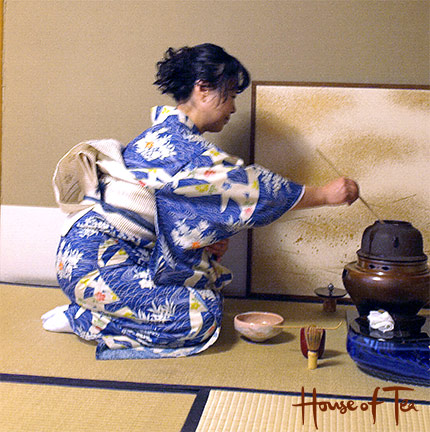
Matcha is finely ground tea powder made from true Tencha – shaded tea leaves that are steamed and dried without being rolled, and then stone-milled very slowly to avoid heat build-up. It takes around an hour to mill approximately 30–40 grams of Matcha in traditional stone mills.
Unlike regular tea where the leaves are infused and then removed, Matcha is whisked directly into the water and you drink the tea powder itself. This gives a very concentrated flavour and a clear umami character.
Two classic preparation styles are:
- Usucha – “thin tea”, everyday matcha with less powder and more water.
- Koicha – “thick tea”, made with more powder and less water, used in the tea ceremony and requiring high-quality matcha.
Powders made from milled Sencha or other teas are not true Matcha, but tea powder.
BANCHA
Bancha roughly means “everyday tea”. It is a simpler tea harvested later in the season and contains larger leaves and more stems. The flavour is often less aromatic, more straightforward and with a more pronounced astringency than finer Sencha.
KUKICHA
Kukicha is a tea consisting of leaf stems and sometimes a mix of stems and leaves. It gives a milder, sometimes slightly nutty or sweet taste and lower bitterness. There are both green and roasted/hojicha-like versions.
HOJICHA
Hojicha is made by roasting Bancha, Kukicha or sometimes simpler Sencha. The roasting gives a brown colour to the leaves and a liquor that can resemble a light black tea in appearance, but without the same bitterness. The flavour leans towards roasted, nutty and caramelised notes, with low astringency.
GENMAICHA
Genmaicha is a blend of green tea – often Bancha or simpler Sencha – and roasted rice (genmai). The rice adds a nutty, toasted note and a softer, warming flavour profile. It is a classic everyday tea in Japan.
KAMAIRICHA
Kamairicha is a Japanese green tea that is not steamed, but instead pan-fired – a method that resembles Chinese tea production more. Instead of steaming, oxidation is stopped by quickly heating the leaves in a hot iron pan (kamayaki), often over gas or charcoal.
The result is a tea with a different aromatic profile than steamed Japanese teas: less “grassiness” and umami, more nutty, roasted or chestnut-like notes. The liquor can appear slightly softer green and the flavour is often round, smooth and gently sweet, with less sharp bitterness.
Kamairicha is produced in significantly smaller quantities than Sencha and Gyokuro and is found mainly in parts of Kyushu. For those used to classic steamed Japanese teas, Kamairicha can be a way to discover a kind of “middle ground” between Chinese and Japanese styles.
KOCHA – JAPANESE BLACK TEA
Kocha means “black tea” in Japanese. Japan previously produced more black tea for export, but after the mid-20th century it was outcompeted by tea from other countries. Today, Kocha is made on a smaller scale, often for the domestic market and as specialty teas. The flavour profile lies somewhere between certain Chinese black teas and lighter Indian teas.
PRODUCTION OF JAPANESE TEA
Much Japanese tea is produced by machine today, but the basic principle follows the same steps as for hand production:
- Plucking: takes place from spring to autumn, with the finest teas from the first spring harvest.
- Steaming: the leaves are steamed briefly, normally or for a long time (fukamushi) to stop oxidation and preserve the green colour.
- Cooling: the leaves are cooled and surface moisture is removed.
- Rolling: the leaves are rolled and shaped while moisture is evenly distributed.
- Shaping and drying: the tea gets its typical needle shape and is dried to a stable moisture content.
- Sorting: stems and different leaf sizes can be separated and become, for example, Kukicha.
Almost all Japanese tea gets its characteristic form of small green needles after these steps.
CULTIVARS – DIFFERENT BUSHES, DIFFERENT FLAVOURS
A cultivar is a cultivated variety of the tea bush Camellia sinensis – roughly comparable to different grape varieties in wine. Different cultivars give different balances of umami, sweetness, bitterness, aroma and hardiness, and some are better suited to shading or specific styles such as Gyokuro and Matcha.
In Japan, the cultivar plays a major role in the character of the tea. Two Sencha from the same area but different cultivars can taste noticeably different, even if they are harvested at the same time.
Common Japanese cultivars
-
Yabukita – the most widely planted cultivar in Japan.
Gives a clear, classic Sencha character with freshness, bitterness and aroma. Robust and easy to grow, which has made it dominant in many regions. -
Saemidori – popular for shaded teas and high-quality Sencha.
Gives a softer, sweeter cup with plenty of umami and less sharp bitterness than Yabukita. Common in high-quality teas from, among others, Kagoshima. -
Okumidori – later budding and used for both Sencha and Gyokuro.
Gives a round, balanced flavour with good body and a nice green colour. -
Asatsuyu – sometimes called “natural Gyokuro”.
Can give a lot of umami even without heavy shading, often with a sweet, soft character and deep green colour. -
Gokō, Uji Hikari, Asahi and others – cultivars often used for Gyokuro and Matcha, especially in the Uji region.
These are well suited to long shading and give high levels of amino acids and pronounced umami. -
Zairai – fields with seed-grown, genetically mixed bushes rather than a single cultivar.
Often gives a more “wild” and varied character, but is used on a smaller scale today.
Cultivar, growing location, harvest and processing method all work together to create the final flavour in the cup.
STEAMING LEVELS – ASAMUSHI, CHUMUSHI AND FUKAMUSHI
Most Japanese green teas are steamed to stop oxidation, but how long the leaves are steamed has a major impact on appearance and taste. People usually speak of three main levels:
-
Asamushi – lightly steamed.
The leaves often retain a clearer leaf structure, the liquor is more transparent and the taste lighter, fresher and sometimes somewhat more “green” in character. -
Chumushi – medium-steamed.
A middle style where the leaves are broken down a bit more, the colour in the cup becomes deeper green and the taste gains more body without being as intense as a Fukamushi. -
Fukamushi – deeply steamed.
The leaves are often broken down further and give a darker, denser and fuller cup with a lot of body. There are usually more fine particles in the tea, which can give a thicker texture and a sense of sweetness and umami.
The steaming level affects how you experience the same type of tea: a Sencha in Asamushi style can be light, clear and aromatic, while a Fukamushi Sencha from the same region can feel deeper, rounder and more intense. In our product descriptions we often mention when a tea is clearly Fukamushi or has a particular steaming style.
HANDMADE TEA – TEMOMI
There are still teas that are partly made by hand using traditional methods. Temomi is the name of a classic hand-rolling method: after steaming, the tea is spread on a large table, and an experienced temomi master skilfully rolls and rubs the leaves by hand for several hours. The result is extremely even, dense needles and a very pure taste. Today this is mostly done in small quantities as a preservation of craftsmanship.
KYUSU – THE JAPANESE TEAPOT
Kyusu is the typical Japanese teapot with a side handle. It is often small, with a built-in metal or ceramic filter to hold back the leaves in the pot while pouring. The small size makes it easy to brew tea in several short infusions, which suits Japanese teas with many possible brews.
Tokoname is one of the most famous towns for Japanese ceramics and kyusu. Teapots have been made here for many hundreds of years, often from iron-rich red clay fired at high temperatures. Banko teapots from Mie Prefecture, made from heat-resistant purple clay, are also well known.
The right kyusu makes it easier to get the best out of Japanese tea – especially finer Sencha, Kabuse and Gyokuro.
